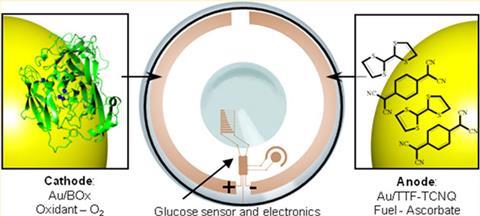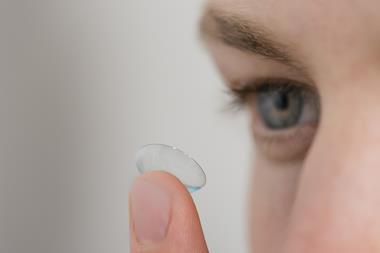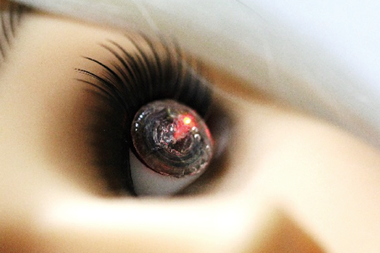Diabetics could one day be able to monitor their blood sugar levels using bionic contact lenses, instead of having to resort to painful finger pricks. Researchers have developed a fuel cell that runs on tears, which they say could power lens-mounted glucose sensors.1
The idea of using lenses for diabetic monitoring has been around for years, as glucose levels in tears track blood glucose levels. An electrical glucose sensor in a lens would be in constant contact with tear fluid, and could produce readings for an on-the-spot display that could be easily read by the wearer. But such a sensor would need a power source, and so far this has proven a major stumbling block.
An international team led by Sergey Shleev at Malmo University, Sweden, may have come up with a solution by developing a biofuel cell that runs on the ascorbate and oxygen naturally present in tears. The cell uses two organic catalysts at the anode to oxidise ascorbate, and the enzyme bilirubin oxidase to reduce oxygen at the cathode. Using human tear samples, the team showed the cell could generate power from tears without altering their glucose content.
‘An ascorbate/oxygen biofuel cell could be a suitable power source for glucose-sensing contact lenses,’ the team summarise in their paper, adding that all the components used appear to be biocompatible.

The technology is unlikely to be adopted for glucose monitoring on a large scale, however, says Chris Geddes, director of the Institute of Fluorescence in Baltimore, US. Some years ago, Geddes successfully developed glucose-sensing contact lenses based on fluorescence,2 but found when the time came to commercialise there was limited interest from companies. ‘It’s very hard to compete with the finger prick in terms of cost,’ he says, ‘most patients wouldn’t be prepared to purchase expensive disposable lenses.’
But, he adds, the idea of a powered electrochemical cell in the eye is ‘very exciting’ and wearable electronics like this may well find other medical applications in future.








No comments yet